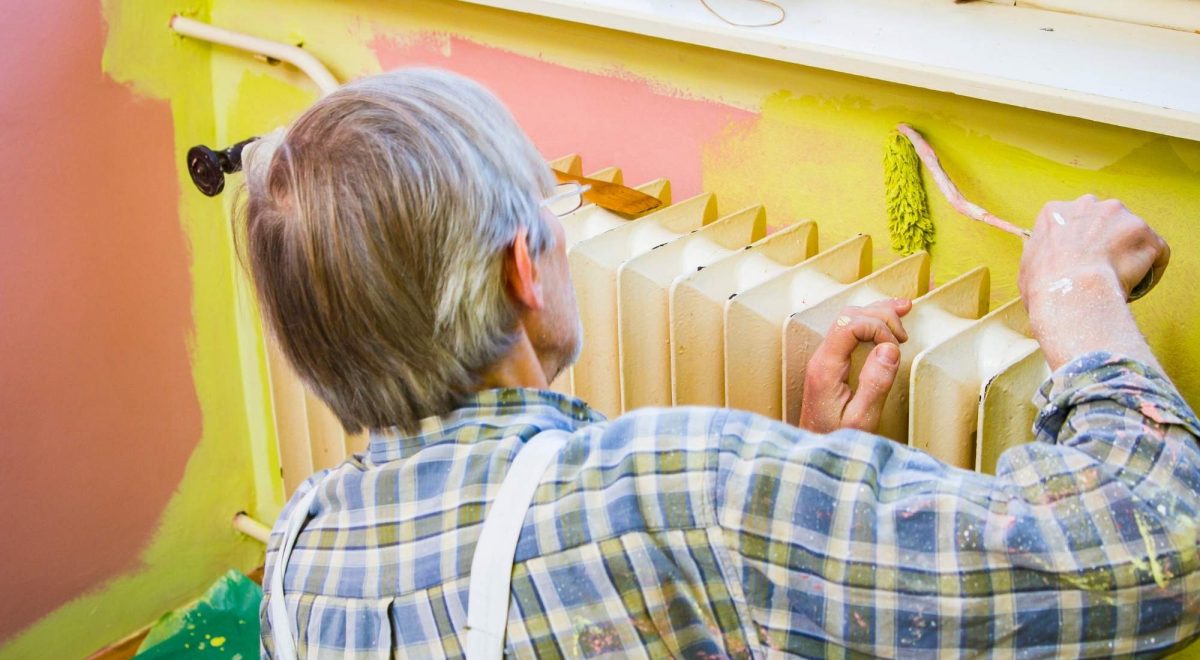Are you wanting to give your outdated walls a fresh new look?
Maybe your toddler decided to create a Sharpie masterpiece on your dining room wall, or you’re moving into a new place that needs some serious sprucing up.
But where do you start? Is it as simple as grabbing a paintbrush and a can of paint and jumping in?
If you are looking to freshen up the walls of your home or office, you’ve come to the right place.
In this guide, we’ll answer questions like:
- Can you paint over painted walls?
- What do I need to know about painting over paint?
- How do I repaint a wall a different color?
- Can you paint over dirty walls?
- And more
Table of Contents
- Can You Paint Over Painted Walls?
- 3 Tips on How to Prepare Previously Painted Walls for Repainting
- 3 Tips for Painting Over Painted Walls
- Save Time and Make Sure Your Painting Project Is Done Right the First Time With A1 Paint
Can You Paint Over Painted Walls?
The short answer is yes.
But there are a couple of things you’ll need to consider before pulling out your brushes, including:
- The type of paint you will be painting over; and
- The condition of the existing paint
What Might Prevent You From Painting Over Old Paint Directly?
First, you will need to know the type of paint you are painting over.
For example, you can’t use oil-based paint over latex, but you can use latex paint over oil paint, just as long as you sand the surface first.
Second, if the existing paint is in bad shape, such as …
- Peeling
- Flaking
- Bubbling; or
- Chipping
… it should be properly scraped or removed before you paint over it.

3 Tips on How to Prepare Previously Painted Walls for Repainting
There are three things you’ll want to be sure to do before you begin painting:
- Clean the walls
- Complete your prep work; and
- Apply primer if needed
#1: Clean the Walls
If you’re wondering …
“Can you paint over dirty walls?” or
“Can you paint over soot on walls?”
… the answer is a resounding, “NO!”
If you want the paint to adhere as it should, you’ve got to start with clean walls.
In some cases, cleaning the walls might just mean a quick dusting or a wipe down with warm water and gentle soap.
But, if you’re tackling a kitchen or bathroom, your best bet will be to put in a little elbow grease, since these areas are more likely to have dirt and grime.
For the very best results, we recommend at least a quick wipe down to remove:
- Dust
- Grease
- Stains
- Grime; and
- Soot
These culprits can:
- Bleed through your new paint color
- Create uneven textures on your walls
- Prevent the new paint from adhering as it should; and
- Impact the life of your paint
And be sure to allow the walls to dry completely before you begin painting.

#2: Complete Your Prep Work
If you’re thinking you can just wipe the walls down and jump right into painting, think again.
If your walls have:
- Nail holes
- Bumps
- Cracks; or
- Places where the paint is flaking
… you’ll need to do a bit of prep work before you begin to paint.
Holes and cracks must be filled, bumps sanded out, and flakes scraped and sanded.
And depending on the overall condition of your wall, you may need to give the whole wall a light sanding. For the very best results, use a drywall pole sander to give your walls a quick going-over with 200-250 grit sandpaper, followed by a wipe-down, before you begin priming.
You’ll also need to use painter’s tape to keep paint from bleeding where you don’t want it, and to help ensure that your lines are sharp and clean.
Prep work can be tedious and time-consuming, and the professionals at A1 Paint Removal, Painting & Restoration can help. We’ve been in the painting business since 1995 and have transformed hundreds of homes in the Portland area — inside and out.
Get in touch with us today for a free estimate.
#3: Apply Primer If Needed
While you might be able to get away without using primer, if you’re using a color that’s only a few shades off, priming is always a good idea.
Not only will using a primer ensure that your new color is seamless and vibrant, but it also covers up discolorations that might show through your new coat of paint.
Once you’ve determined the correct type of paint for the job, you can follow these guidelines for using primer:
- If …
- Your paint is in good condition
- You’re using the same color and type of paint; and
- Your walls are clean and smooth
… you probably don’t need to use a primer first.
- If you’re using the same color, but your walls are in poor condition, you will need to complete the necessary prep work and follow up with a layer of primer to ensure a consistent and smooth base layer for the new paint.
- If you’re covering latex paint with an oil-based paint, you will need to use a primer first, since oil-based paint will not adhere to latex. And you will want to apply two coats of primer to ensure proper bonding of your new paint.
- If you’re doing a dramatic color change, such as light to dark or dark to light, you will need to apply two coats of primer before you begin painting.

3 Tips for Painting Over Painted Walls
#1: Paint in Full Daylight If Possible
The pros agree that the best time for interior painting is in full daylight — especially when you’re doing the final coat.
The light allows you to see where you’ve been, so you’re sure to get an even coat of paint throughout the entire wall
#2: Use Two Coats of Paint
When you’re painting over old paint, you want to use at least two coats of your new color.
If you’re painting over old paint that is darker than the new paint, you may need more than two coats to keep the old color from bleeding through.
#3: Allow for Full Drying Time
Don’t underestimate the importance of dry time.
It’s critical to let each coat dry completely before adding the next layer. This includes between coats and after the final coat.
Why?
Insufficient dry time can result in paint that doesn’t adhere as it should, meaning your finished walls may look splotchy, or the paint won’t properly conceal the color underneath.

Save Time and Make Sure Your Painting Project Is Done Right the First Time With A1 Paint
Family-owned and operated since 1995, the pros at A1 Paint Removal, Painting & Restoration are ready to help you achieve the look you’re dreaming of.
When you choose A1 Paint Removal, Painting & Restoration for your painting project, our team will:
- Help you with color selection
- Help you choose the right type of paint for your project; and
- Complete the job with the highest level of professionalism
We consult you every step of the way — from prepping to finishing — to make sure the entire process is completed with your needs and desires in mind.
Contact us to get a free estimate.




